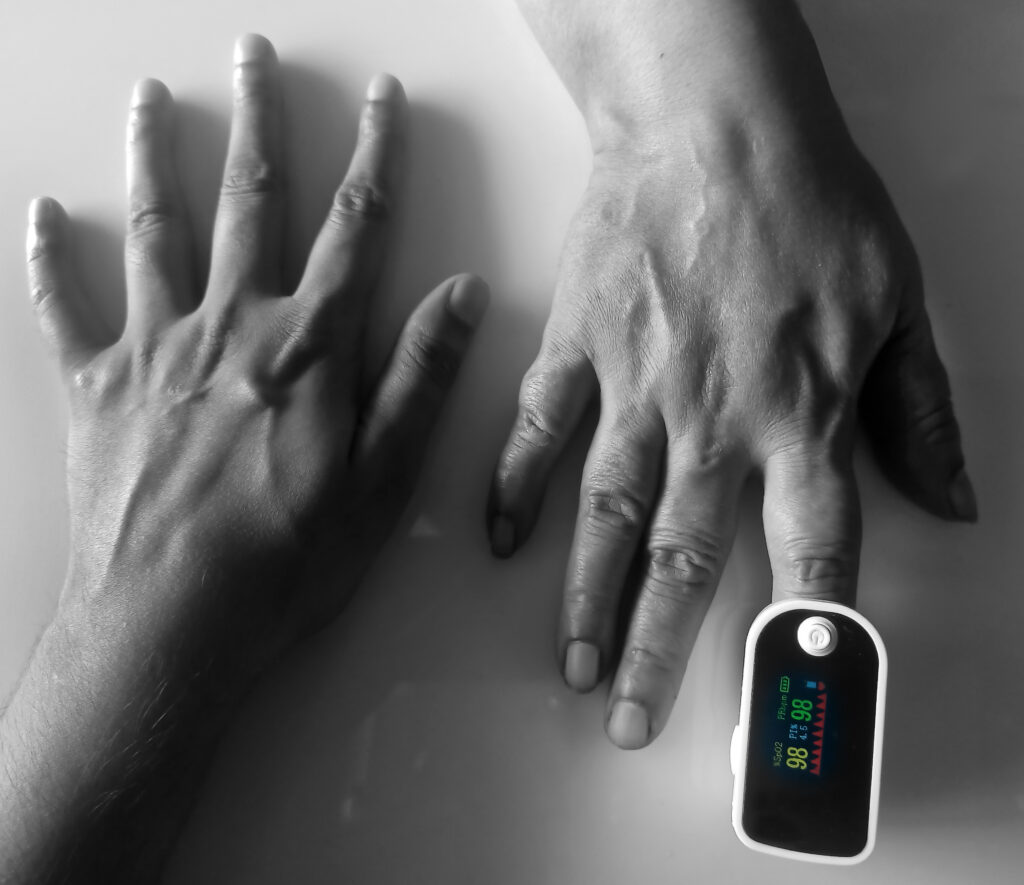When will things get back to normal? A question we have asked since COVID-19 hit us in 2020. Who imagined it would last for more than a year, and return in waves as deadly as the second wave in India, which was nothing less than a nightmare. Practically every family was suffering, grieving, pleading; anxiously looking for hospital beds, oxygen, ambulances and basic help. There were many without access to technology who could not even reach out. This disquieting story arises from our participation in an informal collective that mushroomed as civil society’s voluntary response to the crisis surrounding us.
Sanjay is a migrant labourer from a small town in Madhya Pradesh (MP), India, whom we had helped reach home last year during the lockdown and subsequent migrant crisis. Exactly a year later, on 21st April, he contacted us as his younger brother Praveen developed COVID-19 symptoms and needed help. At home, they were unsure of how to monitor oxygen levels or even how to access an oximeter, unlike many other urban families who could. By the time we were informed, his condition deteriorated, and he was admitted to the local district hospital. Initially, we reached out to an official there to ensure decent treatment as the hospital was gravely under-resourced. They were short on oxygen and a single cylinder was shared between Praveen and another patient, leading to worsening of his condition. Sanjay had to travel four hours away just to search for a separate flowmeter and returned empty handed due to scarcity everywhere. After desperately searching for two days, he found one jumbo cylinder from a local supplier, for which we quickly raised money through Whatsapp groups. The hospital had barely any staff so we managed to find a doctor to advise through tele-consultation, but Praveen continued to deteriorate. There was no testing facility nearby and Sanjay had to take him to another town one hour away in a critical condition for a CT scan. Considering his condition, when the treating doctor asked Sanjay to somehow arrange for Remdesivir from the open market, he called us pleading for help; we tried to hold ourselves together while listening to his trembling voice. He was not a stranger; we could feel his despair and connect with his situation even from a distance.

Our group did not find the demand for Remdesivir necessarily rational since treatment protocols at the time were developed on contradictory scientific grounds. However, we had to be mindful of the pressures placed upon the family. Sanjay was advised to contact the local administration and was finally able to source Remdesivir in another district hospital, but had to travel there on a daily basis and wait for long hours to collect a daily supply. On 30th April, he messaged to inform us that Praveen was much better and thanked the group profusely, even though we had extended support only from a distance. He had been the one desperately running from pillar to post, braving the risk of getting infected. Praveen was discharged on 8th May and started recovering at home.
Suddenly, around the 5th of June, Praveen developed headache and visual disturbances. The family, having heard about black fungal infection in the news, consulted a local doctor in a panic and immediately took him to a government hospital. Sanjay sent us his MRI reports, which confirmed Mucormycosis. However, by this time a strike of government hospital doctors had broken out across the state on account of rising violence against them, and there was no one available to treat Praveen. The group started to reach out to doctors and relief groups in other larger cities of MP, with no success. Fortunately, the doctor’s strike ended the very next day and as we write, he’s undergoing treatment at the same hospital, waiting for curative surgery.
Only a month ago, while helping the urban middle/upper class families, we had observed them navigate a crumbling system; struggling despite their relative privilege and social connections. We had facilitated admissions to expensive private hospitals, and assisted in the acquisition of various necessities and interventions like home-ICU setups, oxygen concentrators, home nurses, private ICU ambulances and stand-by oxygen cylinders. However, this experience gave us a fleeting insight into how much greater the challenges of access the rural and peri-urban Indian population is facing while combating COVID-19.
This story amplifies the severe inequity in access to healthcare that exists along so many axes in our country: the general urban-rural divide in health infrastructure, the differentials in financial resources, the digital divide, the lack of specialist care, the continuing unaffordable out-of-pocket expenditures even within the public health system and the lack of general information. What it only hints at is the massive underlying opportunity costs of the labour, time and energy that is expended in reaching even basic standards of health care by people already living with deprivation; where a single episode of ill-health might decimate a poor family’s finances. We are trying to stand with the Praveens in their struggle for health care and have seen that the public health system would and does help if it could. Yet, even after 75 years post-independence, we ask ourselves – when will it get better?
*Original names have been changed.
About the authors:
Sonam Chaturvedi is an inter-media art practitioner and Assistant Lecturer at O.P. Jindal Global University, Sonipat, India. She is the co-founder of Jeevan Stambh Foundation and volunteers with similar relief collectives working towards crisis management.
Dr. Vandana Prasad is a Community Physician and Public Health Professional. She has been involved with the social sector for over 25 years and has been offering voluntary services to many groups and networks during the Covid-19 pandemic.
Acknowledgments: We want to thank Neha Faruqui and Moulshri Mohan for reviewing the blog and Palak Malhotra whose project inspired in taking the photograph.
Conflict of interest: None
Handling Editor: Neha Faruqui